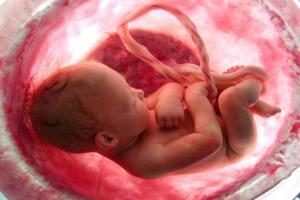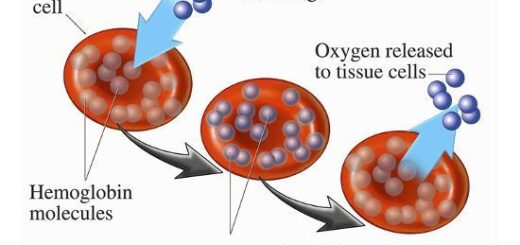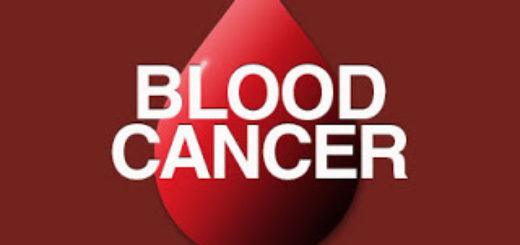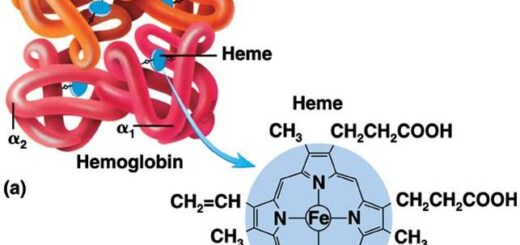Placenta importance in fetal development & the most common placental problems
The placenta is an organ which connects the developing fetus to the uterine wall to allow the nutrient uptake , It provides thermo-regulation to the fetus , the waste elimination , and the gas exchange via the mother’s blood supply , It is also known as the afterbirth , And it is connected to the baby by the umbilical cord .
What is placenta?
The placenta is attached to the lining of the womb during the pregnancy, It keeps the unborn baby’s blood supply separate from the mother’s blood supply , It provides a link between the two , The link allows the placenta to carry out the functions that the unborn baby can not perform for itself .
The baby is inside the bag of fluid called the amniotic sac which is made of membranes, The umbilical cord and the placentas are a defining characteristic of the placental mammals but they are also found in some non-mammals with varying levels of development .
The placenta functions as the fetomaternal organ with two components which are the fetal placenta ( Chorion frondosum) that develops from the same blastocyst that forms the fetus , and the maternal placenta ( Decidua basalis ) that develops from the maternal uterine tissue .
The placenta begins to develop upon the implantation of the blastocyst into the maternal endometrium , The outer layer is divided into two further layers which are the underlying cytotrophoblast layer and the overlying syncytiotrophoblast layer , And it becomes the trophoblast which forms the outer layer of the placenta .
The syncytiotrophoblast is the multinucleated continuous cell layer which covers the surface of the placenta , The syncytiotrophoblast is known as the syncytium , thereby it contributes to the barrier function of the placenta .
What does the placenta do?
Oxygen and the nutrients pass from the blood supply into the placenta , The umbilical cord carries the oxygen and the nutrients to the unborn baby , The waste products from the baby like carbon dioxide gas pass through the umbilical cord to the placenta and then it reaches the bloodstream of the body to dispose of them .
The placenta fights against the internal infection and it produces the hormones to support the pregnancy , It provides oxygen and the nutrients for growing the babies , It removes the waste products from the baby’s blood and it grows throughout the pregnancy .
The placenta gives some protection against the infection for the baby while it is in the womb , It protects it against the most bacteria but it does not protect the baby against viruses and the placenta plays the crucial role during the pregnancy .
Alcohol , nicotine and the other drugs pass through the placenta and they cause the damage to the unborn baby , The placenta passes the antibodies from the mother to the baby , It gives it the immunity for about three months after birth , However , it only passes on the antibodies that the mother already has .
The most common placental problems
Various factors can affect the health of the placenta during the pregnancy such as Maternal age , Certain placental problems are more popular in the older women , Twin or other multiple pregnancy affects the placenta health , If you are pregnant with more than one baby , you will be at increased risk of some placental problems .
The premature rupture of the membranes affects the placenta health , During the pregnancy , The baby is surrounded and cushioned by the fluid-filled membrane called the amniotic sac , If the sac leaks or breaks before the labor begins , the risk of certain placental problems will be increased .
Blood-clotting disorders affects the placenta health , Previous uterine surgery affects the placenta health , If you have had previous surgery on your uterus like the C-section or the surgery to remove the fibroids , you will be at increased risk of some placental problems .
The substance abuse affects the placenta health , Certain placental problems are more popular in the women who smoke or use the illegal drugs such as cocaine , during the pregnancy , High blood pressure affects the placenta health and Trauma to your abdomen increases the risk of some placental problems .
During the pregnancy , the most popular placental problems include the placental abruption , the placenta previa and the placenta accreta , These conditions can cause the potentially heavy vaginal bleeding , After the delivery , retained placenta is also sometimes a concern .
When the placenta peels away from the inner wall of the uterus before the delivery ( either partially or completely ) , It is known as the placental abruption ( the abruptio placentae ) , It can cause varying degrees of the vaginal bleeding and the pain or the cramping , It may deprive the baby of oxygen and the nutrients , And in some cases , early delivery is needed .
The placenta previa occurs when the placenta partially or totally covers the cervix , the outlet for the uterus , It is more popular early in the pregnancy and it might resolve as the uterus grows , And it causes severe vaginal bleeding before or during the delivery .
The placenta accreta occurs when the placenta blood vessels grow too deeply into the uterine wall , It can cause the vaginal bleeding during the third trimester of the pregnancy and the severe blood loss after the delivery .
The treatment may require a C-section delivery followed by surgical removal of the uterus ( the abdominal hysterectomy), More dangerous forms of this problem can take place when the placenta invades the muscles of the uterus ( the placenta increta ) or if the placenta grows through the uterine wall ( the placenta percreta ) .
The retained placenta occurs when the placenta is not delivered within 30 to 60 minutes after the childbirth , It takes place because the placenta becomes trapped behind the partially closed cervix or because the placenta is attached to the uterine wall , either loosely or deeply .
How does the fertilization process take place in the human?
Embryo Screening (PGD) for Genetic Diseases advantages and disadvantages
Reproduction, Types of sexual reproduction ( Conjugation, Reproduction by sexual gametes )
Structure of Female genital system & ovum, Oogenesis stages & Menstrual cycle
Placenta types, structure, function, development & abnormalities




